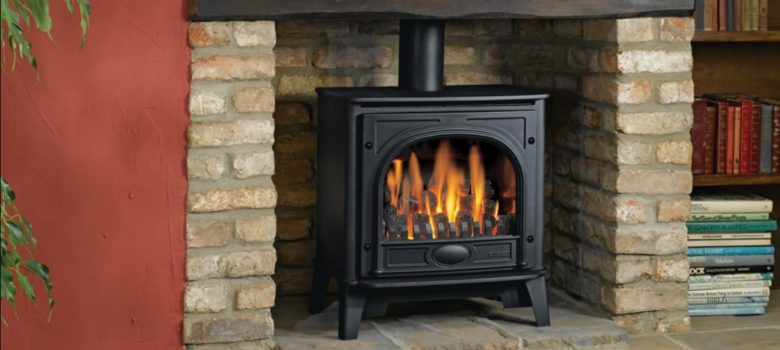
If you want a heating system that will add character as well as warming the room, the obvious choice is a wood burning stove. However, a new generation of gas stoves is now offering a popular alternative. As the name suggests, rather than burning wood, these run off the gas mains. They’re often more effective at heating, and can look incredibly realistic.
What are the benefits of gas stoves over wood burning stoves?
First of all, you don’t need a chimney for a gas stove, so anyone can have it as a feature (provided you’re connected to the gas grid). Installation is fairly straightforward, but should always be carried out by a Gas Safe engineer.

A gas stove is easier to run than a wood burning stove, because you don’t have to worry about making sure you’ve got wood ready, and somewhere to store it. Plus, people often underestimate the cost of ensuring a supply of logs.
Maintenance-wise, all a gas stove requires is yearly servicing. Meanwhile, wood burners produce smoke and dirt which needs regular cleaning, and it’s not easy to clean soot off glass!
Although gas is by no means a green option, it is arguably more so than a wood burning stove – in one crucial way. Recent research has turned the traditional belief that wood burning stoves are environmentally friendly on its head. The emission of carbon dioxide and particulates is an increasing concern in the midst of the UK’s air pollution crisis. There is even a movement to have wood burning stoves banned in London. Gas burning stoves don’t emit the these particulates.
Because there are no real flames in gas stoves, they’re safer for children and pets.
Gas burning stoves are also easier to use; not everyone knows how to get a wood burning stove going, and they can be temperamental. With gas stoves, it’s as simple as turning them on. Some even come with remote control. Also, while wood burning stoves take a while to get going, a gas stove will start emitting heat much more quickly, as a rule.
A gas stove does have some limitations, of course – you won’t get quite the same ambience as you would with the smoke and crackling sounds of a wood burning stove, but there are plenty of benefits of gas stoves. Prices range from around £300-£1000+, depending on the sophistication of the model.












No Comments yet! Be the first one.